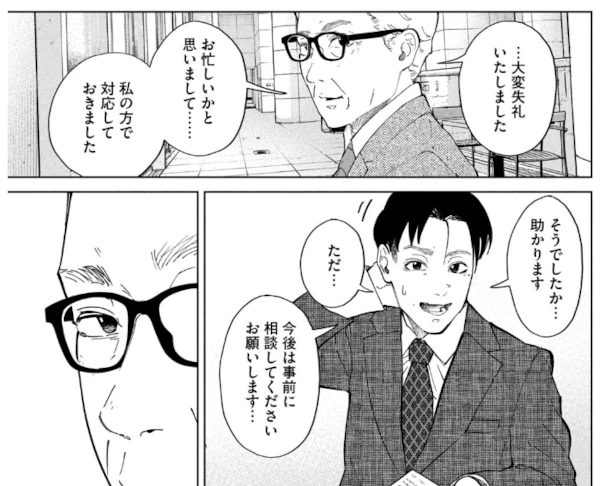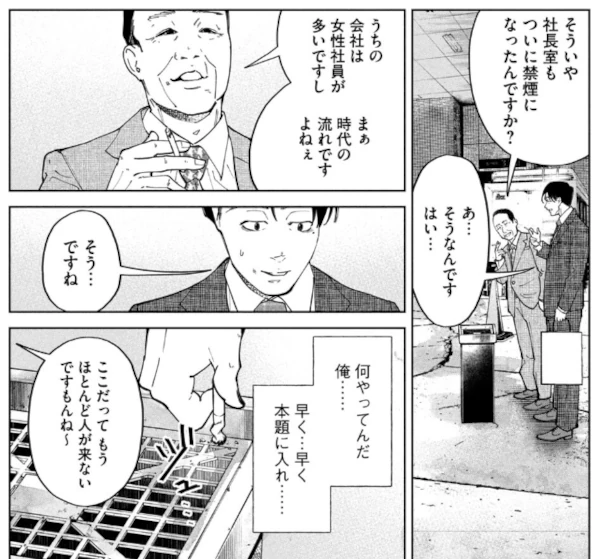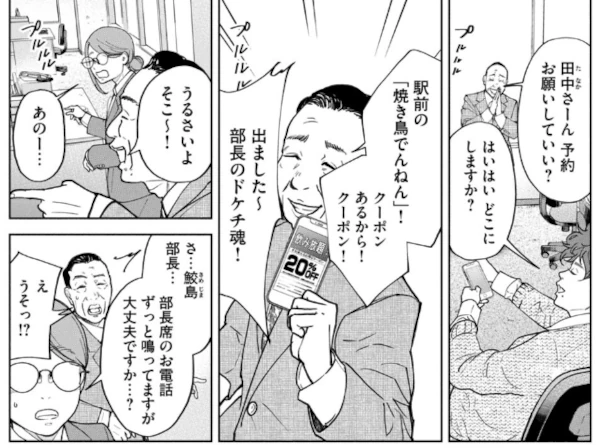This time, we’re introducing Odore Shishido Ken—a charming blend of business drama and ballroom dance that’s ideal for Japanese learners wanting to observe real-world office speech and formal interactions in action.
Work Information

Odore Shishido Ken (踊れ獅子堂賢)
Author: Tsuneki Netaro
Publisher: KODANSHA
Amount of text: moderate
Challenge level: ★★
Latest volume : Vol.7(Feb.2024 / Completed)
Story overview
Ken Shishido, the second-generation president of the women’s lingerie company Cheryl, is what you might call a “figurehead CEO.” Lacking confidence both at work and in his personal life, he drifts through each day as if he’s forgotten how to “start his engine.”
But one day, fate intervenes. He meets someone who makes his heart race for the first time in ages, who makes him break a sweat, and who brings a natural smile back to his face. That person is… Manaka Shiina, a brand-new hire at his own company!
Thus begins a story of rekindling life and love between a CEO and his new employee!
The Appeal of This Manga
When it comes to fiction about ballroom dance in Japan, most people immediately think of Shall We Dance?—the iconic 1996 film that became a domestic hit and even inspired a 2004 Hollywood remake starring Richard Gere. Since then, few works have followed in its footsteps… until now, more than 20 years later, with this manga.
While it shares similar elements—a protagonist who regains confidence through dance and a budding romance with his instructor—the twist here is that the lead is a corporate president. This creates a fresh storyline that blends ballroom dance with the unique pressures of being the head of a lingerie company, allowing readers to also enjoy it as an engaging business manga.

Why this manga is suitable for learning Japanese
This manga is not only entertaining but also highly recommended for Japanese learners for several reasons.
Workplace language in context
As Ken is the CEO of a lingerie manufacturer, many scenes take place in the office. Colleagues use formal speech (keigo) when addressing him, and Ken often responds in kind. Even in dance class, Manaka—who is both his instructor and his subordinate—maintains formal speech toward him. This makes the manga a valuable source for observing polite language in professional settings.

Speaking to older subordinates
Ken is a relatively young CEO at 40, meaning many of his subordinates are older than he is. In modern Japanese companies, it’s common to use formal speech even toward older employees of lower rank. The manga naturally illustrates this balance of hierarchy, language, and workplace etiquette in a way that learners can easily pick up on.

Culture Spotlight
Why Everyone’s a ‘-San’ Now: The New Rules of Office Speech in Japan企業内での呼び方
In recent years, workplace language in Japan has undergone noticeable changes. Traditionally, addressing male colleagues by their last name with -kun (君) or even calling them by name without honorifics was common. For women, it wasn’t unusual to hear diminutives like -chan (ちゃん), which carried a sense of familiarity but could also sound condescending in a professional setting.
In addition, nickname-like forms of address were also widespread, creating a closer sense of camaraderie among colleagues. For example:
・Yamamoto-san(山本さん) → Yama-chan (山ちゃん)
・Suzuki-san(鈴木さん) → Sū-san (スーさん)
These informal nicknames often softened hierarchical boundaries, making the workplace feel more personal and friendly—though they sometimes blurred the line between casual and professional communication.
The Rise of Formality: Compliance and Harassment Concerns
With stricter compliance rules and heightened awareness of workplace harassment, companies have encouraged employees to use neutral and polite forms of address. Today, it’s standard to call everyone—regardless of gender—by -san (さん), and to maintain honorific speech (keigo) even in casual office interactions. This shift helps prevent misunderstandings and protects against potential harassment claims, but it has also made communication more formal and less personal.

Hierarchy and Age Dynamics
Traditionally, Japan’s nenkō joretsu (seniority-based hierarchy) meant that most managers were older than their subordinates. However, as workplace structures have become more fluid, younger managers supervising older employees are increasingly common. To avoid emotional conflict or perceived disrespect, younger managers typically continue to use keigo even toward older subordinates, reinforcing the overall formality of office interactions.
The Loss of Familiarity—and Small Acts of Resistance
While this uniform politeness reduces friction, it also erodes the sense of closeness once fostered through informal language. Some employees now feel that workplace relationships have become overly distant. Interestingly, younger workers sometimes push back against this trend. For example, some deliberately call male juniors by -kun to reintroduce a hint of familiarity into otherwise formal workplaces.
What This Means for Learners
For Japanese learners, understanding these shifts provides insight into both language and culture. You’ll hear plenty of -san and polite speech in modern offices, but also occasional uses of -kun or informal language that signal trust and closeness. Recognizing these nuances will help you not only speak appropriately but also interpret subtle workplace dynamics in Japan today.
A Little Warning
The Relationship Distance Between a New Employee and the Company President
As a new employee, Manaka grows closer to Ken after their chance meeting at the ballroom dance studio. However, the way she bridges the gap is rather unique—inviting him out for meals and even secretly dancing together in the office.
While Manaka herself doesn’t seem to have romantic feelings for Ken, their level of closeness—between a company president and a new hire—is something that’s typical of manga storytelling and would be highly unusual in real-life Japanese workplaces.

Work Information

Odore Shishido Ken (踊れ獅子堂賢)
Author: Tsuneki Netaro
Publisher: KODANSHA
Amount of text: moderate
Challenge level: ★★
Latest volume : Vol.7(Feb.2024 / Completed)
Here’s a safe and convenient way to purchase Japanese manga.
This Blog’s ConceptIn this blog, we are introducing manga that are not only highly captivating but also ideal for Japanese language learners. Studying Japanese through manga is both fun and effective. Manga allows you to understand the subtleties of keigo (honorifics), teineigo (polite speech), and casual conversation in Japanese. We hope you find works that match your interests and use them to enhance your Japanese learning journey.